3 Ways To Transform Your Blues Rhythm Guitar Playing On Acoustic Guitar
By Simon Candy
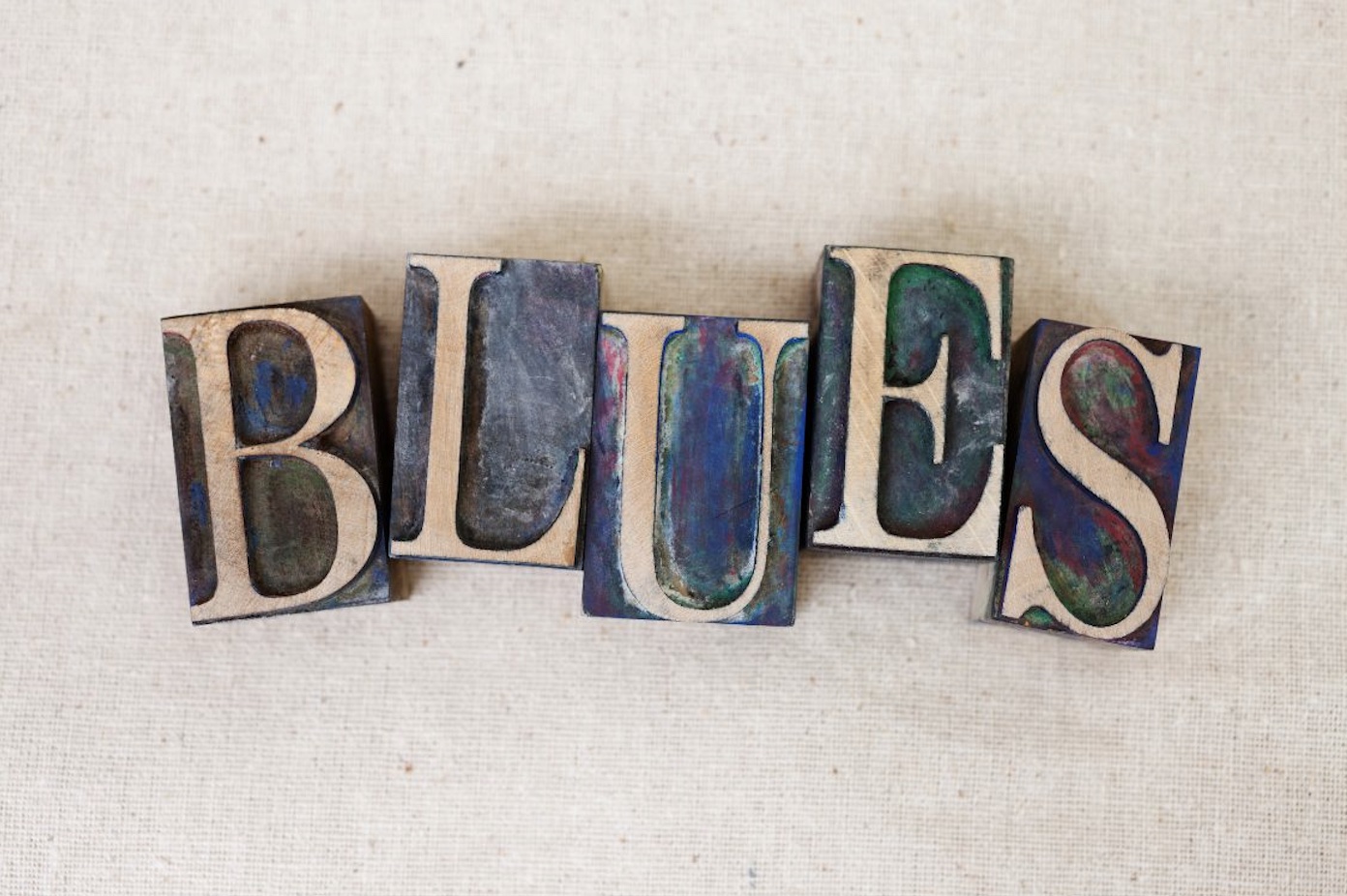 Blues is a universal language amongst musicians, and as an acoustic guitar player, you need to be well versed in this language, even if you don’t consider yourself to be a blues guitarist. You could be anywhere in the world, I know I have been, and find yourself in a situation where you are knocking out a blues with someone you’ve just met. It’s great fun and a great feeling to be able to do.
Blues is a universal language amongst musicians, and as an acoustic guitar player, you need to be well versed in this language, even if you don’t consider yourself to be a blues guitarist. You could be anywhere in the world, I know I have been, and find yourself in a situation where you are knocking out a blues with someone you’ve just met. It’s great fun and a great feeling to be able to do.
Right about now you might be thinking, ok so I need to get my improvisation skills up, and I need to work on my solo technique. Yes, this is all good, however, it’s on the rhythm side of the guitar that most people fall down. It’s not unusual to see a guitarist rip out an absolute killer blues solo, only to suck when it’s their turn to play the rhythm part.
The fact is, as a guitar player, most of your time is spent playing rhythm guitar, yet many of us struggle when it comes to this. It’s almost an afterthought as we strum out the same old chords, with the same old strum patterns, padding out the time until we next take a solo.
So let’s fix this by looking at 3 blues guitar rhythm techniques and approaches you can use when playing the most common form of the blues, the 12 bar.
Throughout this article, I will link to relevant videos on my YouTube channel that relates to the content of this article.
If any one of these videos appeals to you, check them out, or you may prefer to consume this article first and bookmark the videos for later.
It’s up to you.
However, don’t get overwhelmed by the amount of information here.
The goal is to move the needle on your blues rhythm guitar playing. If you learn one single new approach and apply it to your playing, then you have succeeded and are already winning!
One foot in front of the other, as they say :)
The Basic Blues Form
If you have played guitar for at least a little while you should be familiar with the basic 12 bar blues progression. If not here it is in the key of G:
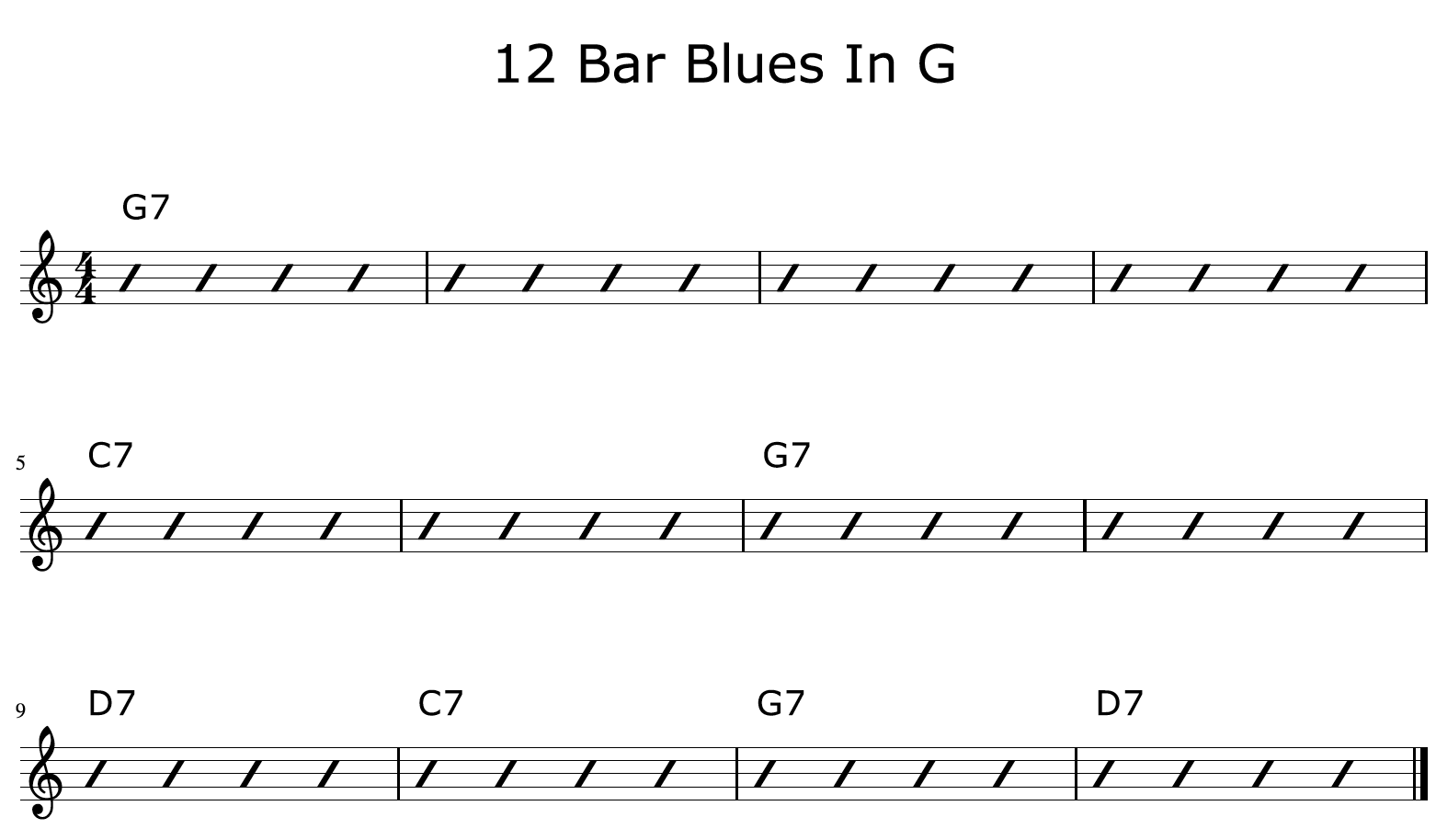
Now, a lot of guitar players, even those who have played for many years, never get beyond this point. That is, when playing blues rhythm guitar, they will look at this chart and play stock standard open and bar chords.
There is nothing wrong with this, but it does get monotonous and boring after a while, and certainly won’t inspire whoever is soloing over it. There is so much more you could be doing when it’s your turn to play rhythm blues guitar parts in a jam, gig situation, or when composing a blues tune.
It’s not just yourself that will benefit greatly from having variety in your blue rhythm playing, but the people playing with you too. For example, when taking a solo, there’s nothing quite like having great rhythm playing to solo over. I guess we could say it’s a two way street when it comes to playing blues, yes you need to solo well, but you also need to support the other people soloing with great blues rhythm guitar playing.
1. Blues Rhythm Riffs
In this first example, we are going to use a cool blues rhythm riff to spice up our 12 bar progression. Rhythm riffs are a great alternative to playing chords and will add interest to your rhythm parts, not just in blues but in any style of music.
Here it is:

In the example above I am applying the same riff throughout the 12 bar, adapting it to the changes of the progression as they happen. This rhythm riff is targeting the 3rd of each chord and is one of literally thousands of riffs you could use in your blues and general acoustic rhythm guitar playing.
If you like the idea of using riffs in your rhythm guitar playing, check out the video below.
In it, I show you how to play riffs in-between chord changes in the style of Jimi Hendrix, Stevie Ray Vaughan, and John Mayer.
Rhythm fills, or chord fills, as they are known, sound great punctuating the chord progressions you play on guitar.
It’s a great way to add interest to your rhythm guitar playing be it blues or any other style of music:
2. Jazzing Up The Blues
Another great way to play a blues and provide the soloist with some cool variety in the rhythm guitar parts is to jazz it up! I personally love doing this myself as it’s not only a lot of fun to play, but a lot of fun to solo over too.
Here is what’s considered to be a stock standard blues in the jazz world:
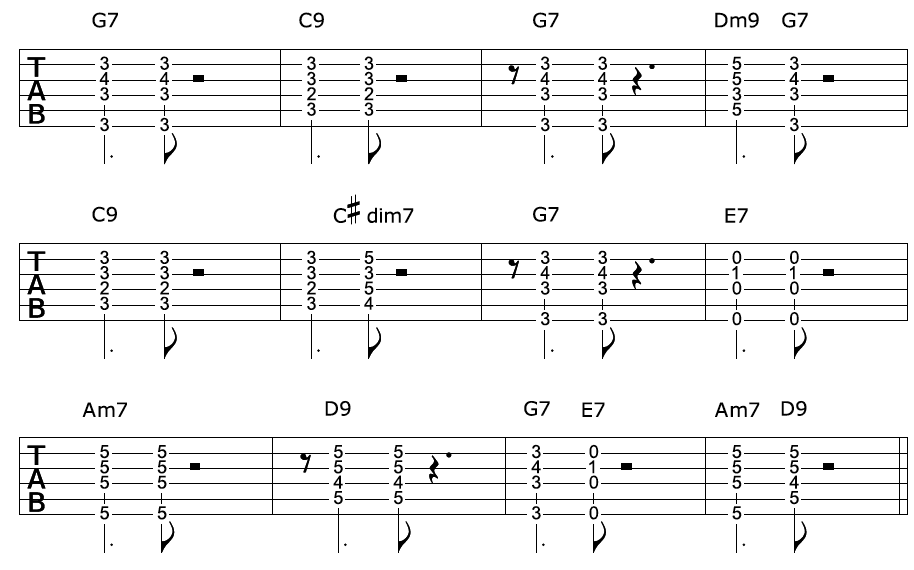
The first thing you might notice about the blues example above is that there are more chords. This is because in jazz it’s common to substitute chords in for, and in addition to, other chords in the progression.
While it’s beyond the scope of this article to go into chord substitution and all that it entails, I highly recommend you play through this example for two reasons:
- It will open up your ears to other possibilities when it comes to playing the rhythm part of a blues. Don’t focus on trying to understand so much about what is going on. Let your ears learn the sounds.
- To gain additional chord voicing’s/shapes you can use, not just in blues, but in your playing in general. While this example is in the style of jazz, you can take the chord shapes and use them in any style of blues for your rhythm playing.
The rhythm used in this example is known as the Charleston pattern. This is a very popular rhythm pattern used in jazz, inspired by the Charleston dance of the 1920s. The rhythm patterns you use in your blues rhythm guitar parts will also add variety and interest to what you do and is well worth considering too.
For a detailed breakdown of how to create a jazz blues on guitar, check out the video below.
In it, I convert a standard 12 bar blues into a jazz blues, piece by piece, one step at a time. You learn exactly how a jazz blues is constructed so you can add it to your ever growing repertoire of acoustic guitar blues playing:
3. Using Block Chords For Your Blues Rhythm Part
In this example I am using what I like to call “block chords”. These are simply chords fretted on the top four strings of your guitar. They are also sometimes referred to as 4, 3, 2, 1 voicing's.
Whatever you want to call them, they are great for providing variety to your rhythm parts. Here are the four block chord shapes I am using in the example below:
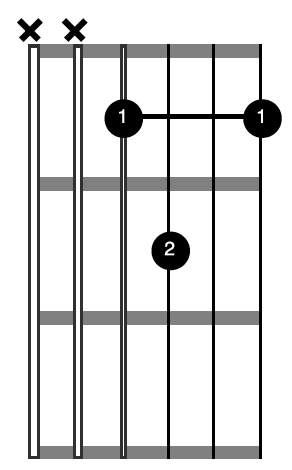
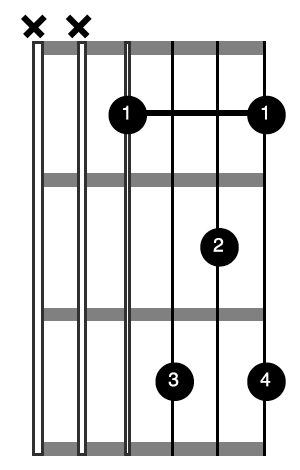
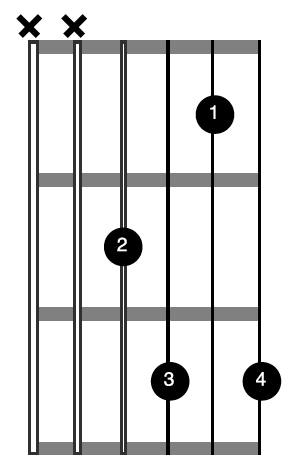
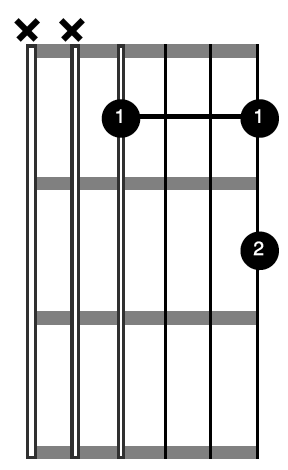
And here they are being used to create a nice blues rhythm part.
Chorus 1:

Chorus 2:
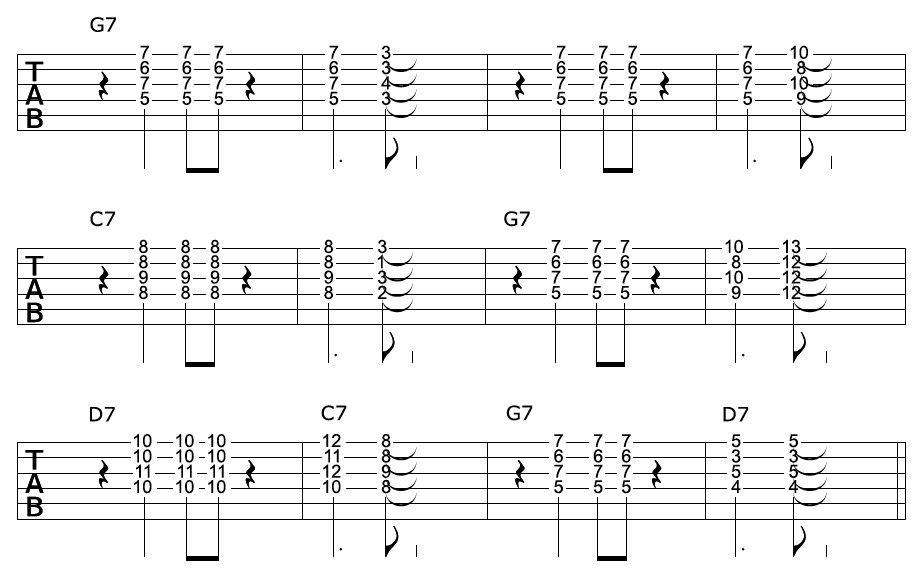
I still remember first discovering these types of chords. I loved them and immediately started applying them to everything and anything I could. They were my first real venture away from the stock standard open and bar chords.
I have included two choruses’ of our 12 bar blues in this example. In the first chorus, I am staying on the one block chord shape per change. In the second chorus, however, I am moving between the 4 block chord shapes per change, creating movement across the static chord.
This starts to reveal to you the possibilities when using block chords in your blues rhythm playing. You are adding a melody component to your rhythm part via the top note in each chord. The great news is, this is just the tip of the iceberg when it comes to these guys!
If you like the sound of block chords, check out the video below.
In it, I break down the block chord for you and show you how to get them into your playing.
Block chords are a great “next step” after getting open and bar chords down on guitar and can be used in any style of music:
Learn how to make the most boring and mundane of chord progressions sound unique and amazing every time you play them with these awesome acoustic rhythm techniques for your guitar playing